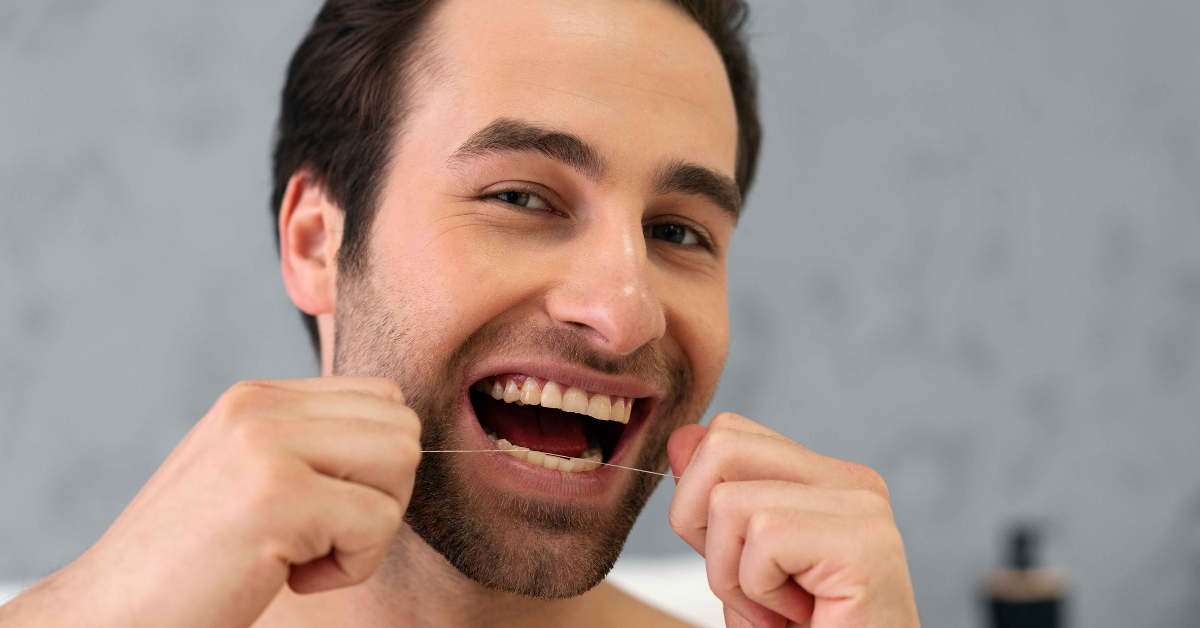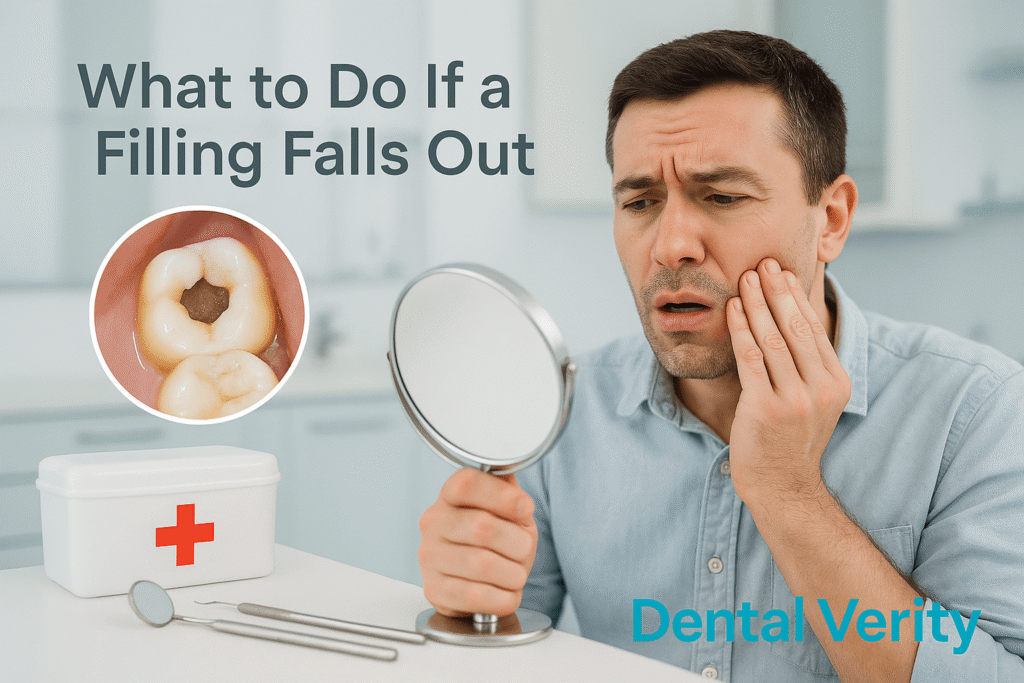
At some point, everyone has experienced the frustration of having an object like a popcorn husk, broccoli, or even a seed stuck in their teeth. It may not always be painful, but the constant feeling of tightness can make it hard to ignore. When something gets stuck, the discomfort can persist, especially when the item refuses to come out. You might think of a scene from a TV show where a character struggles with food stuck between their teeth, but in real life, the issue is far more than just a humorous moment. In many situations, the solution can vary, depending on the particular item that is lodged in your mouth.
If the discomfort lasts longer than expected, it can even harbor bacteria, potentially leading to gum disease or tooth decay. If you’ve tried the basics and the food still won’t dislodge, don’t worry—there are practical tips and solutions you can try. From using floss to swishing water, there are different ways to respond to the problem. Sometimes the solution is as simple as a few careful motions, while in other cases, more extreme measures might be required to get the job done.
What Causes Food to Get Stuck in Your Teeth?
Certain foods are more likely to get stuck between your teeth. For instance, seeds, nuts, and stringy foods don’t dissolve easily with saliva and can wedge between your teeth. This can cause irritation, especially if the food contains fibers that work their way deeper into the spaces. If the food gets stuck in the same spot frequently, it could indicate an ongoing issue with your dental health. Open spaces or gaps between teeth provide the perfect spots for food to nestle in, causing discomfort and difficulty in removing it.
In some cases, food being stuck may be a sign of a more serious problem. Gum disease such as gingivitis or periodontitis can create pockets between your gums and teeth, making it easier for food to get trapped. Similarly, cavities or tooth decay can cause small nooks and crannies where food can lodge and remain stuck. If you are having trouble with food getting stuck in these areas, it’s important to seek professional help. Regular dental checkups can ensure your teeth are properly aligned, preventing food from getting stuck and helping preserve your oral health.
Dentist-Approved Ways to Remove Food from Teeth
- Swish water around your mouth.
- Brush your teeth.
- Floss your teeth as usual.
- Try using your tongue or finger to remove the food.
- Use a toothpick for precision.
- Wedge the paper toothpick between your teeth.
- Avoid Using a Fork
- Realign your bite to avoid future issues.
- Consult your dentist if it persists.
In this section, we’ll dive into each dentist-approved method, showing how simple steps can effectively remove food stuck between your teeth. These easy tips will help keep your smile clean and healthy.
Swish water around your Mouth
Sometimes, your instinctively used tongue may not be enough to dislodge the food stuck between your teeth. In such cases, swishing water around in your mouth can do the trick. Rinsing your mouth is often enough to dislodge the food in many situations. If you have a glass of water or any beverage nearby, just swish it around to help push the stuck item out. This simple solution can save you from using force and provide quick relief.
Brush your Teeth
Brushing your teeth is a common-sense step that many people tend to skip when they’re trying to remove stuck food or debris. Instead, they might turn to more extreme measures, like using toothpicks. However, brushing your teeth gently can help maneuver the food out, as the bristles sweep into the crevices and can dislodge it effectively.
Floss Your Teeth as Usual
Flossing is one of the best ways to rid your teeth of food and bacteria. It was invented to help remove unwanted food and debris between the teeth. If the floss slides easily past the stuck piece, great! But if it doesn’t, try tying a small knot in the floss for extra thickness, which may do the trick. Using floss regularly, along with dental cleanings, helps keep your teeth healthy and your smile sparkling!
Try using your Tongue or Finger
Your tongue can be a handy tool when it comes to dislodging food from between your teeth. By gently using a sucking motion, you might be able to pull the food out. It’s important to be gentle as overworking your tongue could cause jaw pain. If that doesn’t work, you can try using your finger, but make sure to wash your hands first. The saliva in your mouth also helps keep things lubricated, making it easier for the food to break apart without leaving a permanent stain. If needed, try swishing some water or mouthwash around your mouth to further aid in loosening the stuck item.
Use a toothpick
A toothpick can be a simple yet effective tool to remove food lodged between your teeth. You can use the wooden end to gently slide it between your teeth and carefully push the item out. It’s important to be careful and avoid using hard tools like a fork tine, as this could be damaging to your gums or teeth, especially if you have dental implants. You can also try rinsing with warm water beforehand to loosen the food. This can help create space and allow the debris to escape more easily. Just make sure to take your time and avoid using too much force to prevent injuring your gums.
Paper toothpick
If you don’t have a toothpick handy, you can easily make one from a thin piece of paper. Simply fold the paper into a triangle shape, then poke the pointed end between your teeth to dislodge any food that’s stuck. Be gentle when using the paper to avoid any discomfort. This simple trick can be a quick solution when you’re in a pinch, and it’s handy to have on the go when you don’t have a regular toothpick available.
Avoid Using a Fork
It might seem tempting to use a fork to remove an object stuck between your teeth, but this can be harmful. The metal tines of a fork can easily accidentally scrape your teeth or gums, potentially cutting and harming them. This action can damage the protective enamel of your teeth, leaving them vulnerable to further problems. Instead, it’s best to use a more gentle tool specifically designed for this purpose, ensuring you don’t risk harming your smile.
Realign Your Bite
If you notice food getting stuck in a particular tooth or area, it might be time to adjust your bite. Sometimes, gaps or misalignment can make certain areas more prone to trapping food. By realigning your bite, you can help avoid this ongoing issue and improve overall dental hygiene. Regular visits to the dentist can help you identify if any adjustments are needed to ensure your teeth fit together properly, reducing the chance of food getting lodged.
Consult your Dentist
If you’ve tried everything and still can’t remove the food or debris stuck between your teeth, it may be time to call a dentist. Sometimes, stubborn bits of food can be difficult to dislodge with at-home tricks and may lead to bleeding or inflammation. If you’ve been struggling for too long, don’t hesitate to reach out to a professional who can provide the relief you need. In such cases, consulting your dentist is the safest option to avoid any dangerous complications.




